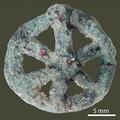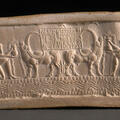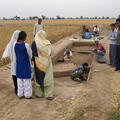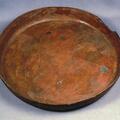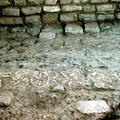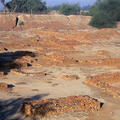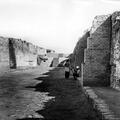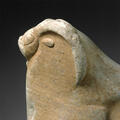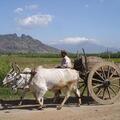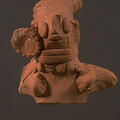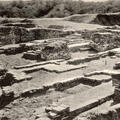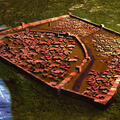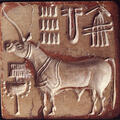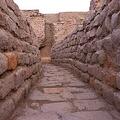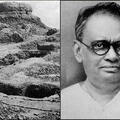One of the most exciting discoveries of the year: a detailed, full-field photoluminescence study of a 6,000 year old copper "wheel" amulet from Mehrgarh in Balochistan has opened the door to many new facts about this period of history.
344 posts, also carried on our Facebook page, about the ancient Indus Valley civilization, including important news, research and occasional visits to museums with ancient Indus artifacts.
Nov 26, 2016
There are some seals with clear Indus themes among Dept. of Near Eastern Antiquities collections at the Louvre in Paris, France, among them the Cylinder Seal of Ibni-Sharrum, described as "one of the most striking examples of the perfection attained by carvers in the Agade period [2350–2170 BCE].
Nov 21, 2016
Latest research on archaeological sites of the ancient Indus Civilisation, which stretched across what is now Pakistan and northwest India during the Bronze Age, has revealed that domesticated rice farming in South Asia began far earlier than previously believed.
Nov 6, 2016
"The Harappans are referred to as a Bronze Age culture," writes Vasant Shinde, "and they used copper and bronze to manufacture axes, adzes, knives, fish hooks, chisels, pots and pans and jewelry in form of bangles, beads, or diadem strips.
Nov 4, 2016
Dholavira is a Harappan site located in the Rann of Kutch, Gujarat. This 47 hectares (120 acres) quadrangular city is one of the largest mature Harappan sites. The site was occupied from ca. 2650 BCE, declining slowly after about 2100 BCE.
Oct 29, 2016
A clever piece by Soity Banerjee uses the modern era to ask some good questions and interrogate the many layers of evidence for what may have brought down the ancient Indus civilization.
Oct 29, 2016
"Inside the major blocks, the streets [of Mohenjo-daro] are not well-aligned. There are many doglegs and some deadends.
Oct 23, 2016
On a recent trip to New York, I was able to get away for an afternoon to explore the ancient Indus collection at that battleship of a museum, the Metropolitan Museum of Art. I found the Indus collection split between two rooms, 234 in the Asian Art and 403 in the Ancient Near Eastern Art sections, with a nice long walk in between.
Oct 17, 2016
It is hard to underestimate the importance of the wheel to ancient Indus civilization. All indications are that it was an indigenous development, pursued in flat agricultural areas, and probably preceded that other great wheel - pardon the pun - of change, the potter's wheel.
Oct 15, 2016
Matrolocality in Harappa? What does that mean? Women are very important in the social hierarchy, and it may not be unrelated that most figurines like these found in Indus cities like Harappa are of women. First, the evidence: "Of particular interest" writes bioarchaeologist Nancy Lovell in the recent compendium of new research . . .
Oct 11, 2016
What was this enormous building in Mohenjo-daro used for? "The northern portion of Block 4 (Image 1)," in the L Area wrote the archaeologist John Marshall, "was originally a large hall of the Intermediate Period which appears to have been entirely covered ink the roof being supported by twenty rectangular piers averaging 5 feet by 3 ft. 4 in. in thickness."
Sep 25, 2016
"The centralized planning of the Harappan settlements," writes the archaeologist write Dilip Chakrabarti, "is one of their most famous features."
Sep 23, 2016
One unicorn horn or two? Two leading Indus researchers, after years of thought and research, came to different conclusions.
Sep 19, 2016
Few things better represent the power of ancient Indus cities in their time - much like subways and digital switches do modern cities - than brick drains.
Sep 17, 2016
Ramprasad Chanda, was "one of the best archaeologists that the Survey [of India] had trained under their scholarship scheme," and organizer of one of the first Indus exhibitions at the Indian Museum in Kolkata in 1924.

